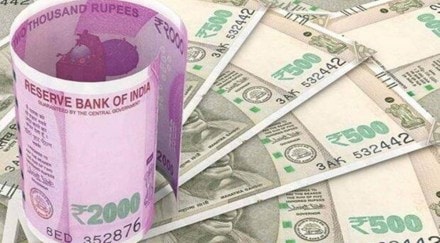I have told this story before but it bears repeating. Nearly 40 years ago, I returned to India and found myself suddenly immersed in FX markets with no formal training in finance or economics. The good Lord, of course, takes care of the innocent, and one night, I was in bar in Bandra—Casbah, sadly since closed—when two African girls walked in. They were beautiful and so I did what any sensible man might and went up to their table and, asking if they were from Switzerland, sat down. Almost immediately, one of them said, “Since Independence, interest rates in India have been kept artificially low for too long.” The other responded, “Which means that inflation has been kept artificially high for too long. And since inflation affects the poor the most, this has contributed substantially to exacerbating the horrifying unfairness and inequality that already existed in the country.”
I looked from one to the other—gobsmacked—as I said, macroeconomics was not my strong suit, and, in any case, I was just out on the town looking for love or, at least, sex. Turned out they had just come out of an economics exam and were either (a) trying to get rid of me or (b) having fun at my expense. I bought them drinks and told them about my day job. Turned out, happily, it was (b) above, so we quickly moved away from any seriousness, had several more drinks and enjoyed a wonderful evening. At the office the next morning nursing a hangover, I pondered their comments, celebrating my introduction to macroeconomics. As a neophyte, I hadn’t really thought about inflation in great detail, except I had read about Paul Volcker, the giant guru of central bankers, who raised US rates to 18% in the 1970s to tame inflation, and, of course, I had heard about the Bundesbank, which, having been born out of the hyperinflation in Germany after World War II, would brook not even a whisper of inflation.
But, till that night, I hadn’t really thought about how inflation affects different groups of people differently.
As one of my darlings had said, while inflation affects everyone, the impact is much harder on poorer people, particularly in countries like India. Poor people spend most of their income on basic necessities, so inflation makes them cut back on needs like food and medicines. The lower middle class, who may have some disposable income, would also find this surplus squeezed as they would have to spend more on basics; this would reduce their discretionary consumption. There would be a further pernicious effect when rising prices forced some otherwise better off people to trade down—say, substituting Café Coffee Day with a cheaper neighborhood restaurant—which would further push up prices of items bought by the less well off. The real lesson is that inflation squeezes spending power where it matters most and as a result reduces overall growth.
While policymakers are aware of these obvious facts, the tools they choose to use, in most cases, belie this knowledge. For instance, in the last budget, particularly after the economic tragedy of the pandemic, government spending should have focused much more on the bottom of the pyramid—including, perhaps, some sort of universal basic income—than on the hope and prayer of trickle-down economics. Extended direct financial support to SMEs with, perhaps, an incentive for jobs created, should be another critical arrow of fiscal policy. Infrastructure spending is good, to be sure, since it also creates jobs, but a government that was more focused on the weaker sections of the economy would certainly have had a different distribution of its fiscal largesse; indeed, it could even have opened the deficit envelope a little more.
Monetary policy is, on the other hand, too blunt an instrument to be able to focus on particular segments of society; however, judging from how far behind inflation most central banks have fallen, it seems clear that their primary focus, too, has also been on growth rather than price stability—again the vain trickle-down belief. In January 2021, when the slope of the US yield curve had steepened to its highest level since 2017 [a classic symptom of upcoming inflation], the Fed, missing the woods for the trees, said it was “keeping its benchmark…rate anchored near zero and maintaining an asset purchasing program…[of] at least $120 billion a month…The economy is a long way from our monetary policy and inflation goals, and it’s likely to take some time for substantial further progress to be achieved.” It was incomprehensible to me, almost as if the real driver of the Fed’s thinking was the market and its rapacious hunger for low interest rates as an instrument for multiplying wealth.
Come September and the Fed, waking up to inflation, finally started bleating about changes it would make; markets, of course, turned volatile. But the inflation cat is out of the bag and many analysts are now fearing that inflation will remain elevated for, perhaps, another couple of years. A central bank that was focused on the weaker sections of society would never allow this to happen—it would always err on the side of tightening monetary policy early rather than risking higher inflation.
Clearly, policymakers everywhere need the kind of teachers I had.
The author is CEO, Mecklai Financial
www.mecklai.com
